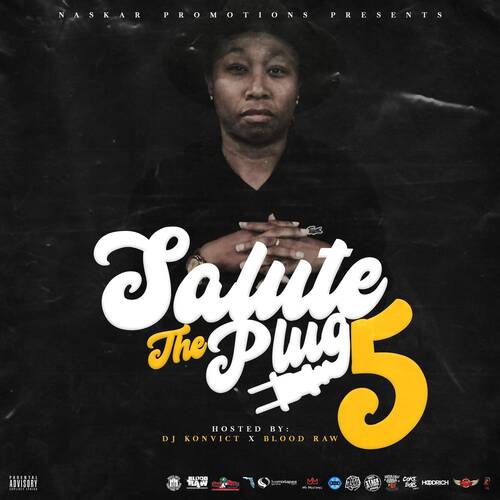



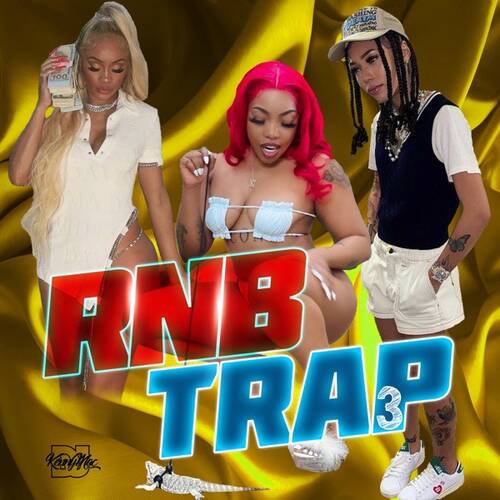
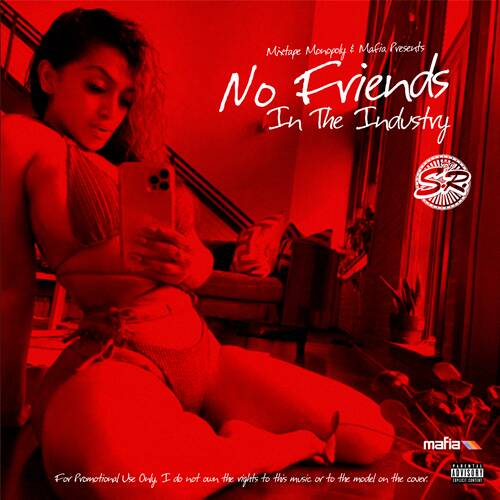
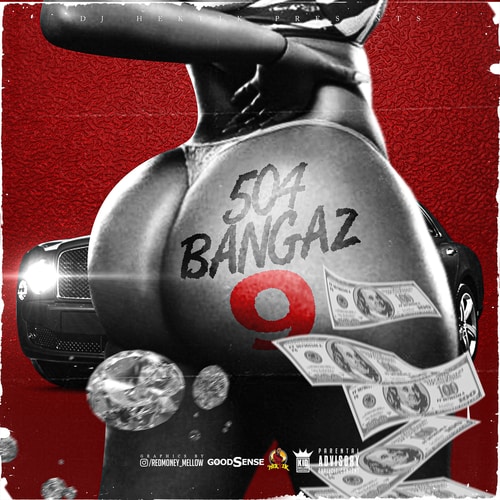

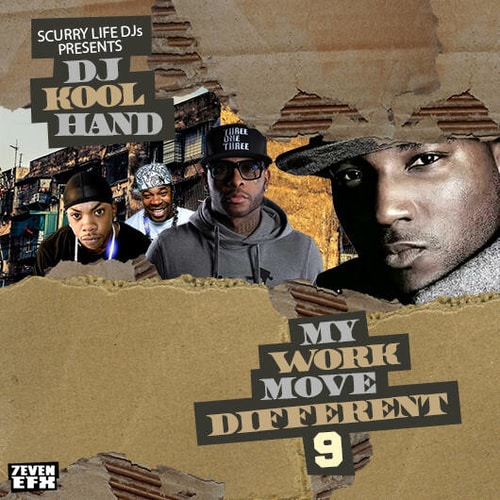
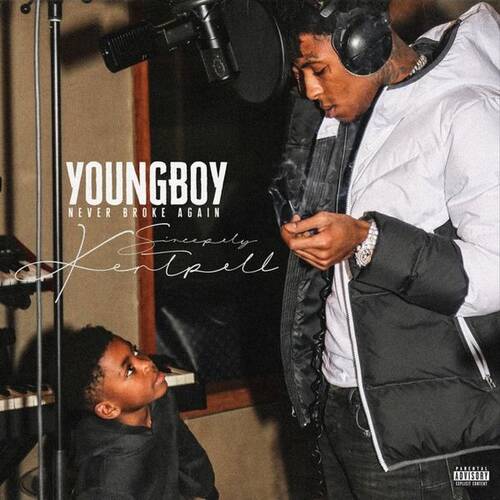


During the height of the pandemic, people have been confined in their homes. Between bingeing TV series and adapting to the disruption of the lockdown to our everyday lives, at-home consumers have been consuming more content than ever.
Mikkel Høimyr, Head of Marketing at Shakr, noted that some of the most successful brands during COVID-19 had been the brands who have invested in brand building for decades because they are familiar and therefore a trustworthy choice during uncertain times.
With the pandemic disrupting a brand’s marketing strategies, organizations have started to look more closely into influencer marketing over the past year.
Høimyr reiterates that “Brands must develop strategies for long term brand building, not just short term sales activation. That means investing in high-quality video production which can be optimized across channels, like TV, OOH, and social; in long-form and bite-sized pieces.”
In a way, digital media and influencer marketing have been the bread and butter of a brand’s marketing initiatives during the pandemic. Marketers have seen how effective influencer marketing can be, especially to at-home consumers during the pandemic.
“Your use of influencers needs to be baked into the broader brand strategy,” he added.
Essentially, influencer marketing is a strategy that connects brands and taps the powerful voices of digital content creators. The goal is to drive authentic conversations about a product or service to drive awareness and engagement.
Influencer marketing provides opportunities for brands to reach and engage audiences that individuals rely on and trust. A Forbes magazine article explains several key points about influencer marketing that brands need to know in 2021:
Marketers are confident that the “influencer hype” is not going away anytime soon. Mikkel Hoymir also supported this statement and said that “Brands will become better at incorporating influencers into their overall marketing strategy.”
In fact, it has been predicted that brands may spend up to $15 billion on influencer marketing by 2022. The term “influencer” has also been changing, and it’s now more closely associated with monetization through brand deals and sponsorships. Some are also beginning to prefer to be called “content creators” or “creators” for those who self-identify as online creators that put more value on their creative worth and the quality of the content they deliver.
Content creators these days are more than just social media celebrities. They are also renowned photographers, performers, writers, and videographers. As such, they want to be recognized for the quality of their online content instead of their follower count.
If you think about it, it may be sound contrary to use paid advertising for an influencer campaign since influencer marketing generally veers away from traditional advertising. However, it seems that paid amplification to create hype over an influencer’s content is becoming more critical to reach a larger audience online.
This can be attributed to effective ad targeting on social media platforms. It ensures that brands get the most of their influencer content despite tricky online algorithms and also amplifies the overall impact of their digital marketing campaign.
Short-form videos have been gaining popularity over the past few years, and it’s not going to end anytime soon. Shakr Marketing Head Mikkel Hoymir noted that “People want to be entertained, and short-form video has proven to be one of the most addictive forms of entertainment, which is one of the reasons why TikTok has become so popular.”
In addition, influencer-created short-form snackable videos of all kinds will continue to appeal to consumers in 2021. As such, brands need to be prepared to produce short-form content suitable for their target audience. Shakr can help grow your brand with great short-form and bespoke video creatives targeted to your consumers.
More and more social media platforms are incorporating e-commerce features into their apps. With this new shopping feature readily available to content-savvy consumers, new online shopping behaviors are also expected to emerge. As such, influencer marketing and brand sponsorship can also read a whole new level with shoppable posts and videos providing seamless transitions from influencer content to deeper e-commerce storefronts.
The Gen Z audience is becoming quite the consumer powerhouse with their reported spending estimated at about $100 billion. Now that the oldest members of the Gen Z crowd are entering the workforce, brands need to pay more attention to their needs and interests. This generation tends to value quality over quantity and individual expression. Most importantly, they prefer brand authenticity and companies that take a stand on social issues that they care about.
Gone are the days when most brands avoid topics on sensitive political and social justice ideologies. Staying silent in 2021 can be seen by many as being complicit in the injustice that permeates in our society. Consumers today, especially millennials and Gen Z, are looking for brands that support their core values with concrete action.
Gen Z represents the largest generation of consumers with $29 billion in direct spending. Studies show that 93% of parents say that their Gen Z children influence their household purchases.
Gen Z is also changing the way consumers shop for products with their pragmatism. They look for deals and not brands.
For this hyper-connected generation, shopping is a way to assert their values and social activism. They are also the generation that is more comfortable around influencers since they care most about the social context of their products.
As such, influencer marketing is an excellent strategy to reach these consumers.
TikTok is now becoming the rapidly chosen social media of choice for the youngest generation.
As a result, the platform has gained a new generation of TikTok-famous influencers. This particular group of people has gotten more clout for today’s teens than other movie or TV stars right now.
Mikkel Høimyr from Shakr also reminds brands that picking the right influencers for their products needs to be based on a solid strategy and said, “You should be able to build a brand that your target audience wants to buy, again and again.”
“If you randomly pick influencers just because they are young and cool, you will just confuse your target buyers and hurt your brand,” Høimyr added.
Here are some tips on launching your influencer marketing campaign on TikTok:
As stated before, brands need to do their research first and determine if influencer marketing is the right strategy to grow their target audience. If your brand believes that TikTok is the right platform, then the next thing to do is search for compatible influencers.
Of course, prior to this, brands need to understand the types of videos that their target audience is consuming on the platform. This will give them an idea about the kind of influencers that will attract their consumers. Once brands have narrowed down the influencers they want to approach, it’s time to do the necessary background check on the target influencers. Brands need to find answers to these basic questions in the search for the right influencers:
· Why are these influencers popular?
· What type of videos do these influencers share?
· Does their image portray the same kind of values as your brand?
· Would there be a potential conflict of interest once the brand engaged with these influencers?
Gen Z influencers are defined by interconnectivity. Innovative brands whose aim is to use influencer marketing for their overall marketing strategy will leverage multi-platform campaigns for their influencers. Brands can have influencer content circulating on TikTok, and at the same time, they can also promote products on their podcasts while also creating behind-the-scenes content for Youtube. Shakr’s Head of Marketing Mikkel Høimyr is confident that a brand’s creative strategy for influencer marketing will only get better in time. He noted that “Brands will become better at incorporating influencers into their overall marketing strategy.”
If the brand already launched an influencer marketing campaign in the past, then chances are these influencers can also be found on other platforms like Instagram, Snapchat, Youtube, and TikTok. Assuming that these influencers would fit well in your upcoming campaigns, then it wouldn’t be a bad idea to expand your existing relationship on TikTok as well.
It may be true that influencers are highly visible on TikTok. However, it’s a platform that’s also saturated with a lot of videos, so pure advertisements alone will not work on this platform. The key to a sustained TikTok campaign is user participation. The TikTok community engages well with quality content that resonates with the audience instead of a one-off ad about a specific brand.
Stay on top of the trends on TikTok and know which type of influencers will bring the most value to your target audience. This endeavor requires generational awareness. Find out what their purchasing motivators are and appeal to their latest interests.
The Gen Z audience craves authenticity online. While brands can use creative content that blurs the lines between promotions and challenges, it is also equally important that these brands also disclose partnerships clearly.
Doritos has always been a crowd favorite for Super Bowl ads. However, Doritos took it up a notch for last year’s campaign when they decided to collaborate with TikTok influencers to extend their Super Bowl campaign on the platform. The brand set up its own #CoolRanchDance challenge and collaborated with nine influencers who made sponsored content.
Feeling the western vibe with my #CoolRanchDance So fun! Make a duet and show me your awesome dance moves! #ad
Fashion apparel Ralph Lauren worked with influencer Diana Silver for TikTok engagement videos. They tied their campaign just in time for the US Open Tennis Championship and used the custom hashtag #WinningRL. The custom hashtag reached around 600 million views.
Are you winning at real life? Tell us how with #WinningRL and we’ll pick 3 champs
Walmart also used the TIkTok’s clout on influencer marketing for their Black Friday campaign last year with the #DealDropDance challenge. Featuring renowned influencers on the platform, including celebrities like Terry Crews, Walmart encouraged their TikTok audience to post videos of themselves at the store expressing how Black Friday deals can make them feel like dancing a jog. The campaign ended up with consumers filming themselves as they dance around the aisles of Walmart for a chance to win a $100 gift card.
DROP IT LOW LIKE WALMART’S BLACK FRIDAY DEALS. #walmart #dealdropdance #contest #sponsored Official Rules at https://bit.ly/32HT0vW
We’re here to help you create great TikTok videos for your Gen Z consumers! Shakr can help connect your brand with the Gen Z segment with our top-notch campaign creative at scale.
TikTok campaigns from brands can dramatically increase your brand awareness. Schedule a discovery call with us now and find out how you can go about it.
13 TikTok Influencer Marketing Case Studies To Inspire You. (2020). Retrieved 23 April 2021, from https://influencermarketinghub.com/tiktok-influencer-marketing-case-studies/
Blog: 2021 The future of influencer marketing after Covid-19 | Bobble Digital. (2021). Retrieved 23 April 2021, from https://www.bobbledigital.com/blog-2021-the-future-of-influencer-marketing-after-covid-19.html
Changing the Game: Influencer Marketing for Generation Z. (2020). Retrieved 4 April 2021, from https://influencermarketinghub.com/influencer-marketing-for-generation-z/
How to Find TikTok Influencers [+FREE TikTok Influencer Search Tool]. (2020). Retrieved 4 April 2021, from https://influencermarketinghub.com/tiktok-influencers-search-tool/
Reardon, J. (2021). 4 things to know about the future of influencer marketing | AZ Big Media. Retrieved 23 April 2021, from https://azbigmedia.com/business/4-things-to-know-about-the-future-of-influencer-marketing/
Wiley, D. (2021). Council Post: Six Influencer Marketing Trends To Watch In 2021. Retrieved 23 April 2021, from https://www.forbes.com/sites/forbesagencycouncil/2021/01/07/six-influencer-marketing-trends-to-watch-in-2021/?sh=31e1de6f7a6a
The post The Rise of TikTok Influencers: How Gen Z is reinventing influencer marketing appeared first on Shakr Video Marketing Blog.
No matter how you look at it, 2020 has been a tough year. In the wake of the global turmoil of the past year, brands are pivoting to maintain their momentum towards recovery. As brands started to adapt to the new behavior of most at-home consumers, new forms of entertainment have emerged to keep these consumers occupied.
Amidst all of these, major social platforms have also rapidly adapted and shifted their focus to meet the rising demands of consumers over the past year. One of these notable social media platforms is Snapchat.
Snapchat had consistently established its own niche audience in 2020, especially with the rise of video-sharing platforms and their unique appeal to the younger audience. Over the past year, Snapchat has been involved in app partnerships with interactive options that provided avenues of consideration for brands.
However, AR remains the key feature that has continued to boost the app’s appeal. The platform has actually remained to be one of the key innovators in the AR realm. Here are just some of Snapchat’s most notable achievements in 2020:
Snapchat’s key strength over the past year has been the growth of Snapchat Originals. It’s a short, vertical-style TV show that has been shown to appeal to younger consumers and their evolving entertainment consumption habits.
It’s expected that the company will focus more on Snap Originals this 2021 as more content publishers and studios will pay more attention to the platform and look for new ways to stay connected with young consumers. This year, we’ll probably see major announcements for Snap Originals, along with big-name stars coming on board, as it expands its advertising and exposure opportunities.
As Instagram and Facebook are making a move to incorporate more eCommerce tools into their platform, Snapchat is also expected to follow suit. Aligning with this shift, the company is looking for more opportunities to provide its creators the avenue to sell their products directly on the platform.
Snapchat has been working alongside various eCommerce platforms like Amazon for quite some time. But as in-feed shopping becomes more habitual for most at-home consumers, Snapchat is also looking to capitalize on similar opportunities.
AR has always been one of the best features on Snapchat’s platform. The company is expected to add more AR functionality and tools in 2021. Snapchat is actually already rolling out its tools to scan barcodes and labels to provide information through its camera. It is expected to improve its database of scannable items to advancing its AR tools that can include promotions, offers, and more.
Snapchat was working with Apple way back in 2017 to develop its AR functionality. There are some speculations in the industry that this partnership will be further strengthened as Apple works on the next stage of its AR glasses. While these rumors are just speculative, Snapchat’s AR capabilities could align with this, and it can be a significant development for the company in the future.
According to Statista, Snapchat currently has 229 million daily active users worldwide, as of Q1 of 2020. It has garnered a 20.5% year-over-year increase from its 190 million from the previous year. These statistics are promising for the app after its unpopular redesign in 2018. Apart from the 2018 plunge, Snapchat users have been increasing steadily since its first launch.
This statistic shows how popular the app is among the Gen Z crowd. It’s one of the most popular social networks among teens. The platform understands what the younger generation wants from social media apps. They have already developed a niche that considers this age group’s habits and preferences through the app.
Snapchat statistics show that over 210 million snaps are created every day. The company has already increased its total snaps per quarter to around 3.5 billion in 2019. Snapchat said that this growth is attributed to users who are using newer Android devices. One of its popular features is called Snapstreak, where users create and exchange at least one snap per day for consecutive days.
As of 2019, it was reported that Snapchat is in second place on overall mobile usage. Snapchat users are known to be very active in the app as they share pictures and videos regularly. Engagement levels are high since its user visit the app multiple times per day.
Snapchat is on the list of the top 10 most popular apps worldwide with 53.5 million downloads. The app saw a particularly massive increase in app downloads during Q2 of 2019. This coincides with the launch of their gender-swap and baby lenses feature on the app.
Snapchat users heavily rely on using their mobile phone’s cameras. The company noted that daily active users access Snapchat’s camera 20 times per day. Furthermore, a Snapchat report indicated that 95% of Snapchat users say that using these features on the app makes them feel happy.
Around 4 in 10 Snapchat users claim that they have discovered the app due to celebrity endorsements and online posts. Snapchat influencers typically take photos of themselves using products and share these snaps on the app. Since Snapchat influencer marketing generally relies on word-of-mouth, ads from endorsements do not seem like actual advertisements.
Brands should consider two main ideas for their Snapchat advertising. Here are some concepts that can be utilized on the platform:
These are used as a direct response from consumers to create overall brand awareness. Moving video creatives and GIFs work best for these ads, and they can be found between user stories. It’s also skippable and can be played for 10 seconds. Shakr provides a variety of vertical video creative templates for your brand’s Snapchat ads. Set your brand up for success and create mobile-optimized videos instantly.
These are sponsored ads that can be used to decorate photos or videos on the app. Unlike regular filters, the brand is responsible for creating these filters.
Here are the types of ads that brands can use for their Snapchat campaigns:
Brands can attach their website to the ad. When it appears, a swipe-up CTA can be used to visit the website or make purchases without leaving the app.
Brands can promote a specific article or blog on their website with this ad. It can be customized with text, in-line videos, and GIFs.
This is the type of ad used to generate app installations for your brand. While the ad plays, a CTA will appear to redirect consumers to install your app.
For brands promoting TV ads, movie trailers, or BTS videos, this is the type of ads to use. A 10-second ad will play and a CTA that will prompt users to finish playing the entire video on the brand’s website.
Sponsored Geofilter ads appear at a particular location for a specific demographic, while sponsored lenses feature fun lenses that can alter a user’s face.
1. Choose an ad objective.
2. Select audience, budget, and schedule.
3. Choose an ad type.
4. Run the campaign.
Snapchat ads are a great platform to help persuade consumers to purchase your brand’s products. You need to make sure that you are giving these consumers the content they want to see on the platform.
Brands need to capture the attention of Snapchat users and make them aware that they are looking at great products. Various creatives that play with colors, fonts, and sounds can be used. Brands can also use vertical video templates from Shakr and scale their video campaigns with on-brand creatives.
Snapchat ads have huge swipe-up rates. Brands can use creative CTAs to invite more users to engage with their content. Brands can also engage their audience with Shakr’s personalized creatives at scale, where brands can create dozens of videos with just a click of a button on the Shakr platform.
Domino’s used Snapchat Ads for the launch of the New Bigger Better pizza campaign in Europe. The campaign showed a humorous portrayal of people buying pizza that was too big to carry.
Bacardi cleverly used the app to reach their target consumers in Germany and strengthen their brand awareness. They used Snapchat’s Sponsored Lenses for Bacardi’s Do What Moves You summer campaign. The brand also used Snap Ads to create horizontal videos that promote their slogan.
Beauty brands like Sephora are creating unique ads to stand out on video-sharing platforms. Sephora utilized Snapchat’s gamified AR lenses to increase sales. Snapchat users who completed the game were given coupons that they can instantly use on Sephora’s website.
Subway wanted to raise awareness on the launch of their new sandwich, and they tried to reach the younger generation through Snapchat. They used Snapchat’s Commercials that featured a 5-second video with animated emojis and a closeup of their new sandwich to excite the audience about their product.
As Snapchat continues to evolve with its variety of eCommerce and AR features, pushing your brand to help trailblaze on the website may be a golden opportunity for 2021. We’re here to help you create exciting videos for your Snapchat account.
Shakr can help connect with people with our top-notch campaign creative at scale. Snaps from brands can dramatically increase your consumer engagement this year. Schedule a discovery call with us now.
References:
10 Snapchat Statistics Everyone Should Know in 2021. (2020). Retrieved 23 March 2021, from https://www.oberlo.com/blog/snapchat-statistics
17 Snapchat ad examples (and why they work). (2020). Retrieved 23 March 2021, from https://revealbot.com/blog/snapchat-ad-examples/
Hutchinson, A. (2020). 25 Predictions for Social Media Marketing in 2021. Retrieved 23 March 2021, from https://www.socialmediatoday.com/news/25-predictions-for-social-media-marketing-in-2021/589785/
Snapchat Advertising: Everything You Need to Know in 2021 – JungleTopp. (2020). Retrieved 23 March 2021, from https://jungletopp.com/snapchat-advertising/
The post Snapchat Statistics Marketers Should Know: Opportunities For Brands in 2021 appeared first on Shakr Video Marketing Blog.
In the aftermath of the global pandemic, organizations today are now competing across the globe to maintain a loyal consumer base.
As a result, brands now rely on personalized and localized content to remain relevant and provide a more pleasant consumer experience against their competitors.
Today’s global brands and MNCs would often customize their digital assets like their websites, social media posts, and videos.
Based on geographic regions, digital content varies, and some even go so far as modifying everything from language to design.
Companies today have access to a large number of data about their target audience. These include their hobbies, interests, locations, products they purchased, and even the topics and keywords they have recently searched.
Brands that have access to these vast amounts of data are making it easier to create a personalized and localized online experience for their consumers, offering significant gains and benefits for both the brand and consumers.
For brands today, personalization and localization may mean many things. Some brands view it as a business strategy that will increase their sustained growth.
For others, it’s a set of tactics used to boost website traffic and email response rates. Some may even see the two as just a buzzword.
Simply put, localization groups consumers according to their demographic characteristics such as age, geography, or gender. While personalization optimizes the experiences and messages to individuals, not the group they belong to.
But what do these terms really mean, and why do they matter for brands today?
Personalization uses specific data about a particular consumer to help brands customize the messages they send to them. This data can include their name, when they last visited the website, their abandoned carts, or even specific actions they did to your website like saving coupons or discount codes.
On the other hand, localization involves sending the right message to the right consumer, at the right place, and at the right time. It uses real-time data about specific demographics to create unique hyper-specific content.
So, how do they differ from each other? Personalization involves looking at specific users, while localization involves segmenting consumer demographics as a whole. As such, personalization may use a specific consumer’s name, while localization would use the local language and images specific to their geographic location.
Brands may use personalization and localization tactics for various reasons. It can promise immediate results like short-term revenue growth. However, investing in these tactics can also reflect the brand’s commitment to future market opportunities.
The main goal would be to establish a memorable entry to the market to gain a specific advantage to consumers over its competitors. Shakr Local at Scale provides effective location-based personalization creatives for brands that need geographic relevance to increase the results of their video ad campaigns.
Here are several reasons why brands use personalization and localization:
A brand’s immediate goal is to increase revenue by venturing into new markets by entering new geographical locations or sectorial consumer-based areas. Additionally, brands will see increased revenue from their localization and personalization efforts by gaining more local engagement from their international audience, ultimately seeing improved purchase conversion rates.
While the ultimate goal for brands would be to increase revenue for the long term, a brand’s immediate goal is to first gain a strategic market entry advantage over its competitors. Consumers generally appreciate brands that are in tune with their specific needs. Localization and personalization are effective for showing consumers in new markets that the brand is involved in the local community.
Personalization and localization help forward-thinking companies transform their message, product, and marketing communications to sync on a local level. Brands invest in these strategies to allow them to adapt to the ever-changing local business landscape. By complementing localization efforts with continuous personalization, brands will gain the advantage of strengthening their consumer relationships and building brand loyalty.
Marketing gimmicks tend to be hyped over certain periods of time. However, it is entirely possible that personalization and localization are more than just a passing marketing hype.
While some marketers tend to dismiss these strategies as just a fleeting gimmick, several shifts in the industry have proven that personalization and localization are more than just buzzwords. Perhaps they may even signify a paradigm shift in the way brands market their products in the coming years.
The past decade has given brands access to information and big data more than ever before. The growth of technology has also prompted the rise of automation and machine learning. These innovations take over labor-intensive tasks such as content translation, data collection, and even the scaling of video content creation.
As technology continues to evolve, it will become easier for brands to provide localized and personalized content for consumers. Location-based creative personalization with Shakr Local can help brands create hyper-localized ads in specific areas. With its easy-to-use video creation platform, Shakr empowers brands to produce high-quality videos instantly.
According to Statista, mobile traffic accounted for more than half of the Internet traffic in 2019. The priority of Google’s mobile-first SEO indexing is also an indication that the growing power of mobile is here to stay. As such, mobile-driven commerce is expected to grow in the coming years. This is why brands need to effectively deliver mobile content that is both personalized and localized on their devices.
Before the rise of Google and the Internet, consumers accessed information in various ways, primarily through newspapers or while watching TV. Now, the rise of second screens indicates that consumers are interacting with brands on their mobile devices while watching TV, online shopping, or even while browsing social media. Personalizing and localizing content for these online channels will show that brands pay attention to where consumers are as they try to understand their wants and needs. This keen attention to detail will help build trust and brand loyalty.
There’s no doubt about it. Personalization and localization will indeed bring growth and revenue for brands in the years to come. While brands are looking for ways to implement these strategies effectively, there would often be a disconnect between the two strategies. The truth is, personalization and localization will work best if these tactics are combined.
Here are several reasons why brands will get the most out of personalization and localization when they go hand-in-hand:
As e-commerce continues to dominate the global market, it is no longer enough for businesses to use a single language website. Smart content translation allows brands to build trust with their shoppers that literally speak their language. However, it should not stop with language. Brands also need to update other location-based aspects of their website, such as the price listings in local currency. Studies have shown that online shoppers tend to abandon a purchase when prices only appear in USD.
Chatbots are proving to be very useful for businesses. Brands that use chatbots in their websites have been shown to significantly save up to 30% in customer service costs by providing customers with information and answering repetitive questions. Making chatbots multilingual will also help consumers answer questions quickly. As they navigate the Internet using their native language, multilingual chatbots are a natural extension of this seamless user experience.
As consumers use your app, website, chatbots, and other digital assets, they give brands information about their personal preferences. This information will provide brands with information about the products they are interested in, their preferred customer support channels, and even when they are more likely to check your app or website.
Video localization is a relatively new tactic in digital marketing. It delivers an experience that connects the customer to the brand through localized elements in the content. Video localization and personalization should provide a deeper understanding of the context, culture, customs, and characteristics of the target demographics. This is why it is essential to plan ahead to create videos that can be localized.
With Shakr Local, brands can create hyper-localized creatives with video automation tools that automatically create hundreds of personalized videos to provide consumers with memorable and custom-made brand experiences.
The vacation rental marketplace has grown exponentially over the past few years. By building a presence in almost 200 countries globally, Airbnb does not just need to translate the platform into multiple languages; it also needs to create localized marketing content to target specific demographics. The brand created targeted social campaigns with robust city guidebooks and localized experiences for tourists to target its growing base of hosts and travelers. Airbnb also uses voiceovers in localized videos to ensure that nothing gets lost in translation.
Minimalist fast-fashion brand Uniqlo has been opening stores around the globe over the past few years. Alongside its fast expansion, it takes a strategic approach to create social media for its various markets worldwide. Uniqlo localizes its social media content by country to make it simpler to create customized content for promotions by region.
Video streaming service Netflix is now operating in more than 190 countries across the globe. Due to its ambitious rapid global expansion, Netflix has to push for a localization program to create curated content for subscribers in each country. More recently, their content strategy expanded to creating Netflix Originals content for various markets. This is the kind of content that Netflix promotes to local consumers and attracts new audiences with new monthly curated content across its global platform.
Coca-Cola is already a household name across the globe. With its prevalence in the markets across the world, one of Coca-Cola’s branding concerns is on localizing its products and packaging. To ensure that the brand resonates with consumers everywhere, Coca-Cola creates localized campaigns for its major markets. For example, its “Share a Coke” campaign features localized packaging and product copies to add a more personalized touch and catch consumers’ eyes.
Customers today expect more from brands. They expect brands to know their needs and not just their demographics. And what better way to do that with Shakr’s localized videos at scale. Want to learn more? Discover a call with us now.
Customer Segmentation vs. Personalization Marketing | Sailthru. (2021). Retrieved 29 July 2021, from https://www.sailthru.com/marketing-blog/personalization-vs-segmentation-real-difference-matters/
Localization and Personalization at Scale. (2021). Retrieved 29 July 2021, from https://www.contentstack.com/blog/all-about-headless/localization-and-personalization/
Peacock, L. (2019). 5 Brands Who Killed It with Localized Content Strategies. Retrieved 29 July 2021, from https://www.shutterstock.com/blog/5-brands-localized-content
Video Localization in the Digital Era. (n.d.). SPi Global Data Intelligence & Content Technology. https://www.spi-global.com/wp-content/uploads/2021/03/Video-Localization-in-the-Digital-Era-Whitepaper.pdf
The post How Personalization and Localization Can Help Brands Create Successful Marketing Campaigns appeared first on Shakr Video Marketing Blog.